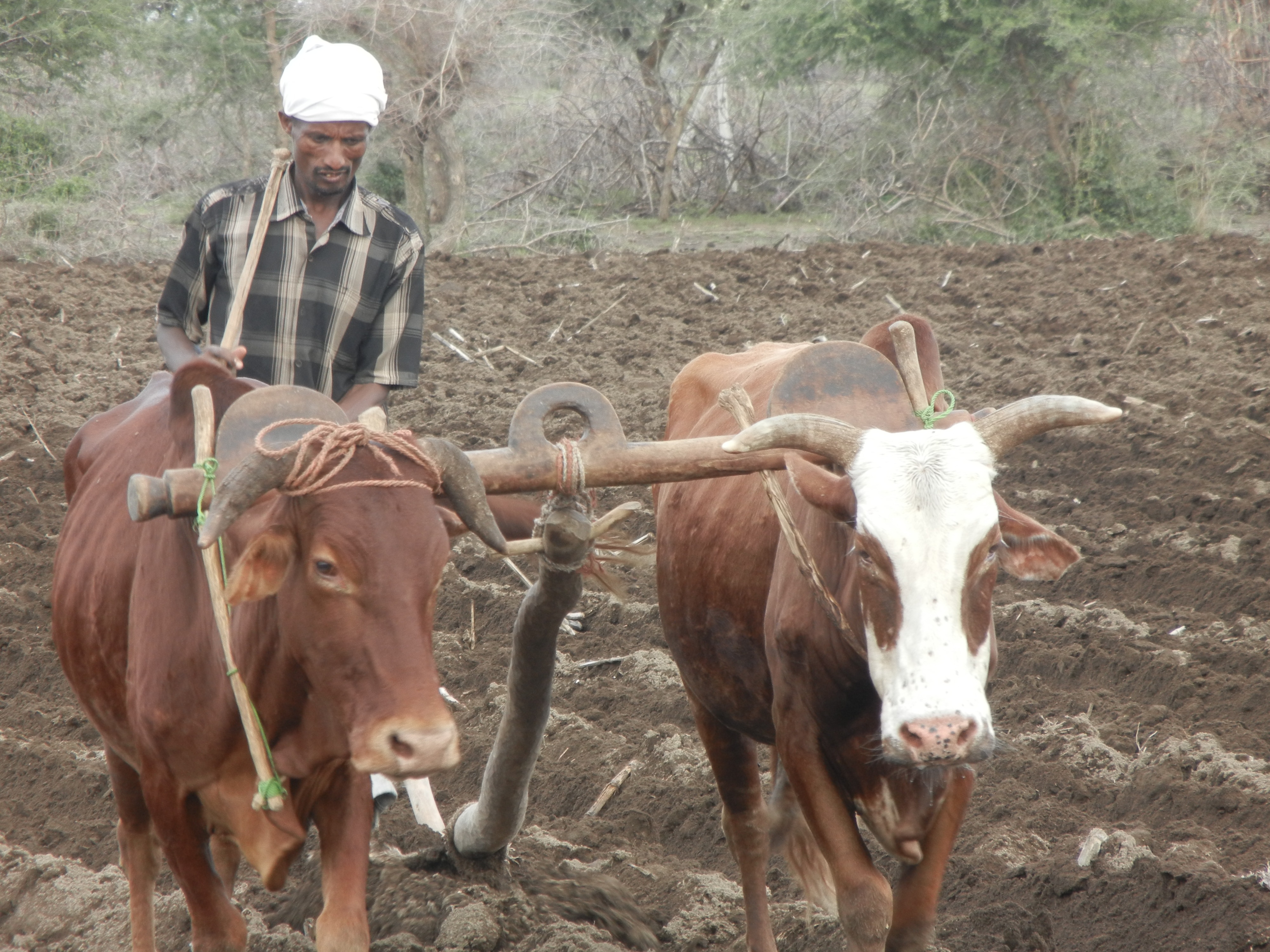
HAWASSA, Ethiopia — Zeritu Tilahun is in many ways a typical African farmer: a mother of five who tills just an acre or two, using tools and techniques handed down through generations.
However, she is also among an estimated 150,000 small-scale Ethiopian farmers who are learning how to grow crops not just for their own families but also for the millions of hungry people in their country who normally depend on food shipped from the United States and other countries. Advocates say that helping Ethiopians increase their own production makes sense because it moves them away
from subsistence farming, saves on transportation costs and delivers food faster to people who desperately need it.
The United Nations World Food Program, the largest global distributor of food aid, bought Tilahun's corn from her farmer cooperative with funds provided by the United Kingdom. She used the extra cash to add eggs and peas to the diets of her five children "Now we're getting income," she said, speaking through an interpreter. "We're buying nutritious food and our life has improved."
Yet the United States is not a partner in buying food produced by Ethiopians. Swayed by opposition from shipping and agribusiness, members of Congress from both parties long have resisted pleas from the Obama and George W. Bush administrations to do more than ship commodities abroad.
In a notable shift, the farm bill signed into law in February authorized up to $80 million a year in overseas purchases. But it remains unclear whether any of those purchases will ever take place.
The permission to pay for "local and regional procurement" represented a compromise by Congress with the Obama administration, which proposed in 2012 to allow as much as 45 percent of the commodities supplied through the $1.4-billion-a-year Food for Peace program to be bought overseas. The problem is getting any money actually doled out through the appropriations process.
There are token amounts in the fiscal 2015 spending bills that are caught up in an end-of-year stalemate. But the key appropriators who will write the final measure oppose foreign procurement.
The Senate Appropriations Committee in May voted 16-14 to provide $35 million for such purchases, enough to feed 200,000 more people because of lower shipping costs, according to the U.S. Agency for International Development.
Opponents of the move include Senate Agriculture Appropriations Subcommittee Chairman Mark Pryor, an Arkansas Democrat; his House counterpart Robert B. Aderholt, an Alabama Republican; and the Senate panel's top Republican, Roy Blunt of Missouri.
Opponents argue that restricting food aid to U.S. commodities sustains American jobs and provides a PR benefit for U.S. farmers
"The bottom line is, this will be $35 million that would not be used for American commodities," Blunt said at the May markup.
The House bill emerged from the Appropriations committee with no money at all for local procurement. But in a June floor vote, the chamber voted 223-198 to set aside $10 million for local purchases.
BEYOND SUBSISTENCE
Funding food purchases in countries like Ethiopia "would be a very good message to everybody that the U.S. is not just shipping its commodities but believes in supporting the agriculture sector," says Purnima Kashyap, senior deputy country director for the World Food Program in Ethiopia.
Improving local farmers' skills and yields is important to Ethiopia's effort to move away from its millennia-old reliance on subsistence farming, says Khalid Bomba, a former investment banker with J.P. Morgan who heads the Ethiopian Agricultural Transformation Agency, charged with overhauling the country's agricultural sector. "If a farmer knows that someone is going to buy their production, then they will invest in higher-yielding seeds and they will invest in fertilizer, " Bomba says.
Some help has come from USAID out of the Obama administration's $1-billion-a-year Feed the Future initiative, which has more support in Congress because it's not viewed as being in competition with U.S. farm or shipping interests.
The World Food Program's Ethiopian purchasing has had some hitches. The local farmer cooperatives that sell to the U.N. agency lacked equipment to clean the grain or a proper place to store it. Nor did they have money to buy grain from their member farmers. To address the financing issue, the project offered the co-ops a type of forward contract that they could use to get loans from the Commercial Bank of Ethiopia, and the program got the government-owned bank to cut its interest rate in half, to about 7 percent.
In May, a dozen members of the Sidama co-op near Hawassa, a city in Ethiopia's Rift Valley south of Addis Ababa, gathered to talk to a CQ Roll Call reporter about the World Food Program's project. The Sidama union has increased its sales to the agency from 600 tons of corn in 2010 to 2,500 this year and returned 70 percent of the profit to the co-op's members.
"Now there are market opportunities," said one of them, Desta Damboba, who farms less than 3 acres. He said he can sell as much as 4.5 tons of corn now, almost double the amount of three years ago. He's planting more corn as a result.
His voice rose with pride as he said, "I'm increasing my production to sell more, so there is no need for the American people to sell to Ethiopians."





